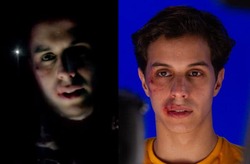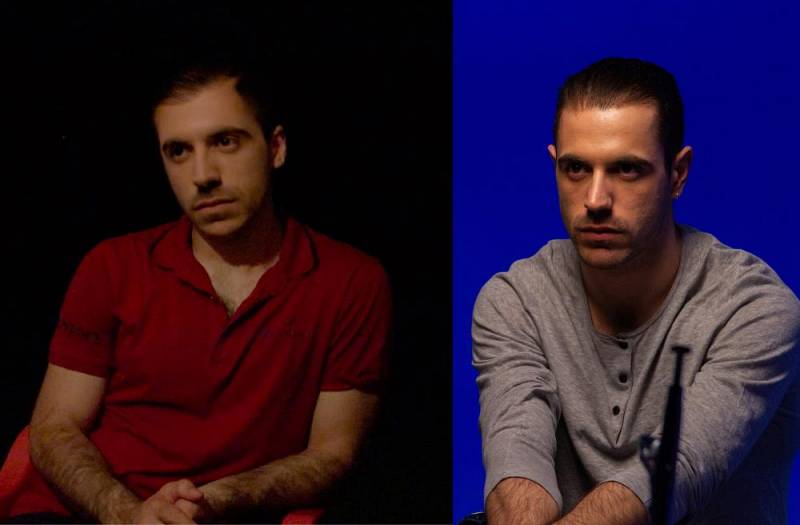Where are the docs in the technical categories?
 Friday, March 26, 2021 at 12:00PM
Friday, March 26, 2021 at 12:00PM 


Almost two weeks after the Oscar nominations and one snub still stings: Welcome to Chechnya in Visual Effects. After making it in the shortlist, hopes were high that its life-saving use of facial replacements could catapult it to Oscar history as the first documentary to be nominated in this category, one largely dominated by Hollywood blockbusters (which were mostly missing last year) Only a year like 2020 could have brought a documentary film close to this category and it still did not happen.
This begs the question: why are documentaries routinely ignored in categories outside of Documentary Feature?


The category for Best Documentary Feature was instituted in 1942, a year after two wartime documentaries received the Honorary Award: Kukan: The Battle Cry of China, about the Chinese resistance during the Japanese occupation, and Target for Tonight, about the UK Royal Air Force’s night raid in Germany.
Outside their own category, documentaries struggle to find footing in other categories. Some of the few docs that made it to nominations in other categories are:

-
Chang: A Drama of the Wilderness (1927) - nom for Unique and Artistic Production
-
With Byrd at the South Pole (1930) - won Cinematography
-
Woodstock (1970) - won Documentary Feature, noms for Sound and Film Editing
-
Birds Do It, Bees Do It (1974) - nom for Original Score

-
Hoop Dreams (1994) - infamously snubbed in Documentary Feature, nom for Film Editing
-
Waltz with Bashir (2008) - nom for Foreign Language Film
-
The Missing Picture (2013) - nom for Foreign Language Film
-
Honeyland (2019) - nom for International Feature Film and Documentary Feature
As of today, no documentary film has been nominated for Best Picture, Best Director, or either Original/Adapted Screenplay.
Original Song is the major exception (which we already discussed), with eight docs earning nominations (six of those nominated in the 2010s, with Diane Warren and J Ralph nominated twice.)
Rarely do we see documentaries break out of its two categories: Documentary Feature and Documentary Short Subject. During awards season, documentaries are treated as sidebars. Rarely do we see documentaries find traction outside of their own category despite the rising number of them being made and made accessible to a wider audience.
During the birth of cinema filmmakers captured fifty seconds of normal life; some of them unstaged, some of them staged, but made to appear that they are not. In some ways, the purest (and earliest) form of cinema is the documentary. Culture largely shifted to the consumption of fiction films as the hegemonic paradigm once Hollywood had established itself.

This trickles down to the Academy Awards (and other awards) where studios campaign their films in the hopes of bringing prestige and money to the table. The documentary world rarely pours money out in the same way that Hollywood does in promotion. While documentary filmmakes brave the outside world to capture stories, fiction filmmaking works around personalities and celebrities in their storytelling. This is not to say that one way of filmmaking is better than the other, but that the latter’s finances are a deciding factor during awards season; money propels narrative in countless ways when it comes to campaigning for golden trophies.
There remains a bias against documentaries, even among cinephiles. It is quite a common perception that documentaries are not like “normal” films. You don’t just casually watch them for entertainment unlike fiction films. To some extent, this makes sense. A lot of us most probably first encountered the concept of documentaries with television, where they are mostly treated as another form of journalism rather than cinematic storytelling.
Unfortunately this viewpoint takes for granted the amazing craft that has been showcased in documentaries that would have been worthy of consideration. These are just examples of films from recent memory...
CINEMATOGRAPHY

Fiction films mostly create stunning images in a controlled environment, whether it be in complex continuous shots (1917, Birdman), highly stylized visions (Roma, La La Land), or visual effects-laden imagery (Blade Runner 2049, Gravity). Documentaries, for the most part, do cinematography by capturing what is uncontrollable. With sharp visual instincts and logistical mastery, docs have produced some of the most indelible images. They challenge the notion that only fiction films are ‘cinematic’, whatever that even means.
HONEYLAND beautifully captured the symbiotic relationship of a beekeeper and the nature surrounding her with warmth and audacity. FREE SOLO took its viewers on a visceral visual ride as its daredevil climber attempts to achieve a seemingly insurmountable goal. This year, THE TRUFFLE HUNTERS owned its visual eccentricity with its painterly cinematography, especially lighting and blocking. Also from this year is MY OCTOPUS TEACHER which contained breathtaking underwater camerawork that highlighted the beauty and peculiarity of its subject matter.
FILM EDITING

Clearly dominated by the ‘best means most’ mindset, this category has housed films that featured flashy editing, whether in war (Hacksaw Ridge, Dunkirk), music (Whiplash, Bohemian Rhapsody), or chase scenes (Mad Max: Fury Road, Ford v. Ferrari). However, editing is such a crucial part in documentaries that's it's frustrating they aren't nominated more often. Most docs are made within the span of multiple years, amassing a large amount of footage, and then assembling them into a coherent and engaging narrative.
MINDING THE GAP demonstrated the accumulative power of years of footage in telling the story of poverty and domestic abuse. CITIZENFOUR fashioned itself as a slow-burning, real-time thriller that captures the looming danger on Edward Snowden. This year, COLLECTIVE incessantly followed two narrative threads that are propelled with nerve-wracking reveal of information with its sharp succession of scenes. Meanwhile, TIME encapsulated an emotional meditation on memory through its skillful weaving of home video footage with pristinely shot scenes of the present.
ORIGINAL SCORE

It is no surprise that this category has been largely dominated by fiction films from composers familiar with the Academy, given the branch’s reputation of being insular. More recently, the composers mostly rewarded here are from Best Picture nominees, either established composers (Alexandre Desplat, John Williams) or exciting new talents (Justin Hurwitz, Hildur Guðnadóttir).
But documentaries also use music to push the boundaries of storytelling and emotional engagement. AMERICAN FACTORY dynamically shifted tones between the humorous and the heartbreaking as it examined the clash of Chinese and American values. THE KINGMAKER highlighted the grandiose delusion of a former dictator’s wife through its swelling music. One of the strengths of THE EDGE OF DEMOCRACY is its score that stirringly traced the fall of Brazil’s democracy through a very personal perspective. This year, THE MOLE AGENT became a heartwarming celebration of old-age community and a moving lamentation of society’s neglect of the elderly through its whimsical score.
SOUND

Another category where the ‘best means most’ applies. Sound is generally dominated by Best Picture nominees, and/or war films (Dunkirk, American Sniper), musicals (Les Misérables, Dreamgirls), and sci-fi/action (Gravity, Arrival).
Documentaries also use sound mixers and designers for their storytelling arsenal. KURT COBAIN: MONTAGE OF HECK modulates the musical legacy of its titular music icon and a more psychological exploration of the said artist. THE CAVE terrifyingly immerses the audience in multiple instances of bombings and how the hospital staff try to survive inside. HALE COUNTRY THIS MORNING, THIS EVENING approaches both sound and film editing in a lyrical manner, assembling moving through familiar noise and stretches of silence to subtly evoke the atmosphere of a town by only trusting the symphony of sounds and images.
PRODUCTION DESIGN, COSTUME DESIGN, and MAKEUP AND HAIRSTYLING

Documentaries are understandably absent for the most part in this category, since most of them do not rely on recreating events but capturing them. However, an increasing amount of documentarians are playing with the form, allowing them to use these aspects commonly associated with fiction filmmaking to reveal the more important truths of their stories.
THE ACT OF KILLING used makeup to confront its central band of murderers by letting them relive the atrocities that they have committed. THE CIRCLE recreated the lives of the people involved in the titular underground gay network through costumes and hairstyling. THE MISSING PICTURE utilized figurines and miniatures to recall the harrowing ordeal of the director during the Khmer Rouge, to haunting effect.
Here's to hoping that Welcome to Chechnya’s close call for a Visual Effects nomination was not a fluke but an exciting example of momentum in respecting the technical achievements of documentaries.



Reader Comments (19)
Readers should note that AMPAS Board of Governors have awarded five documentary filmmakers honorary Oscars for achievement.
Agnes Varda
Frederick Wiseman
D. A. Pennebaker
William L. Hendricks
Pete Smith
In the 50's the Academy gave nominations to documentaries:
1952 Navajo (Cinematography)
1957 Perri (Score)
1958 The Bolshoi Ballet (Score)
1958 White wilderness (Score)
Dick Johnson is Dead certainly could have been up for Cinematography, Production Design, Film Editing and Score.
Collective could have been up for Picture, Director, Original Screenplay, Film Editing, International Film and Documentary, making it a 6 nominations Best Picture candidate.
Two recent examples of docs that could have been good nominees in Production Design: Voyeur and Casting JonBenet.
What a lovely, thoughtful piece! And especially fortifying to read in a year where awards bodies have largely got their nomination slates so wrong, or played it so safe.
I'm more stung by WTC missing a nomination in documentary feature. They went for something schmaltzy and weird (My Octopus Teacher) over something much, much better.
Documentaries can literally be a series of interviews and archival footage. For all the technique they barrow from fictional cinema these days is just a blurring of the line seen in TV with premium and streaming services -- little to no censorship means we're not experiencing 30 minute to an hour R rated content -- with a wider than square aspect ratio -- and even multi-channel digital sound systems.
Like animation and porn, documentary is mostly a bastard genre.
also I recall that I think Hoop Dreams was nominated for Film Editing, while snubbed from Documentary Feature... that was really odd.
The Hoop Dreams snub remains unexplainable. As someone with a degree in documentary filmmaking, I can only imagine that once a doc "crosses over" into mainstream popularity, a lot of insular and/or snobby doc filmmakers resent it. Case in point: the major snubs of 1991: Truth or Dare, Hearts of Darkness, Paris is Burning, A Brief History of Time.
this is a lovely post. i especially love the inclusion of hale county this morning, this evening which is one of my favorite films. i also really really really loved the cove and thought it had a great score too. the mole seems poised to also land a foreign film nod. alas.
This is a very interesting read. Documentaries are getting more and more creative lately so I guess it's a question of time. I would have nominated Time for editing.
Great post and great points. Talking about this recently, I remembered Fahrenheit 9/11 getting some Best Picture buzz and I had a thought that Time could get in this year for Film Editing. Maybe someday.
2018 was such a great Oscar doc year.
Hale County and Minding the Gap are 2 of my all time favorites and I would have nominated them for picture. While Free Solo was not my choice, it should have gotten editing and cinematography.
@/3rtful Animation is not exactly a genre but I agree with you with the lack of nominations to porn movies, especially in screenplay categories. LOL
Paranoid Android: Re: Hoop Dreams, the Academy took the unusual step of demanding to see the voting tally for the Documentary category that year. They found that although it had received a bunch of top scores, a small number of voters had actively voted it down, and that was enough to cause it to miss a nomination.
On 2002, I have as #1 film of the year, Michael Moore's "Bowling for Columbine" (Chicago is #2 and Talk to Her #3)
"Bowling for Columbine" should have been nominated for Picture, Director, Original Screenplay, Film Editing and Documentary Feature... it won the last one, and was not nominated for anything else... sigh.
With documentaries being more popular and accessible than ever before, I feel like we could see the first documentary nominated for Best Picture within the next few years. I’m less confident about it getting a Best Director nomination, though, just because I worry that some within the director’s branch might view documentaries as inherently less of a director’s medium (which obviously isn’t true, but that perception still exists). The exception would be if the documentary to break through in Best Picture is made by an already established director.
For instance, I could totally see Werner Herzog getting a Best Director nomination for a documentary over the next few years if he makes another one that gets anywhere near the acclaim of Grizzly Man. He has to be considered overdue for a nomination by this point anyway, and he’s arguably just as known for his documentaries as he is his narrative films.
I know you mention best song for nominations but it's worth noting that Melissa Etheridge did win the Oscar for best song for An Inconvenient Truth. Beyond that, I'm glad this blog once again is having a conversation that needs to be heard. I wish the general public could be convinced to watch more documentaries rather than trashy reality TV. It's up to us to recommend documentaries on a regular basis to family and friends. If documentaries became more mainstream, the Academy might begin noticing them in other categories.
Bowling for Columbine really was one of the best films of 2002. I don't think enough of the Academy would have supported more nominations. Other best picture documentaries for me are Minding the Gap, Hale County This Morning This Evening, Citizenfour, The Act of Killing.